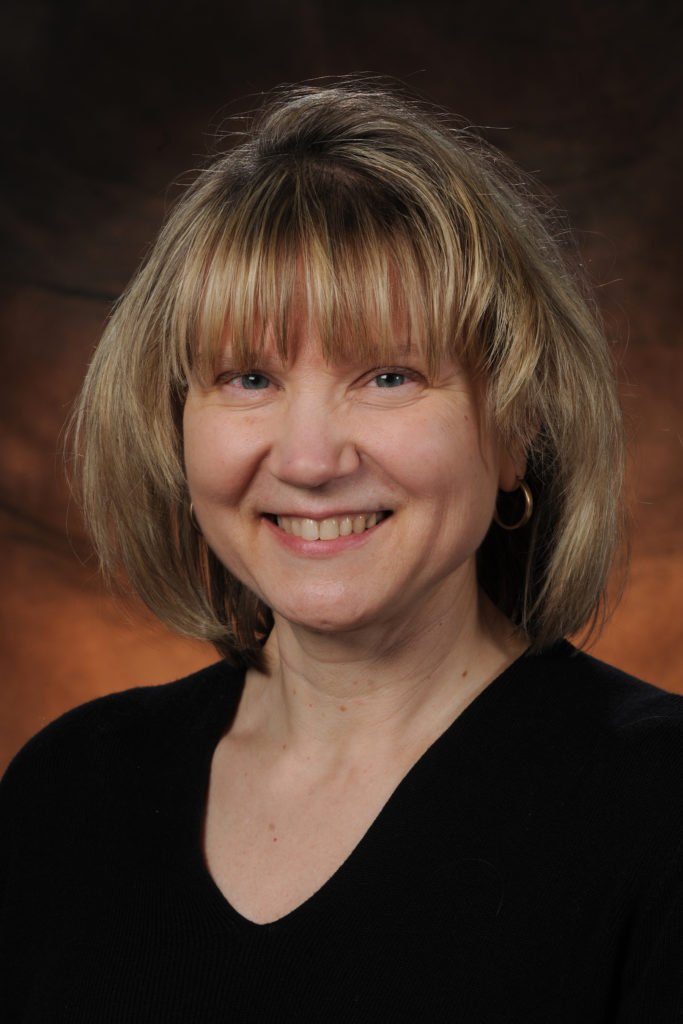Summary
In 1964, Nancy, a 5-year-old, is having her evening bath when her parents discover she has a lump on the skull the size of a grapefruit. This would mark the onset of a mysterious and debilitating disease that researchers are still struggling to understand.
Over the next 40 days, medical professionals struggled to discover what was causing the lump on the skull. Each test seemed to exacerbate the swelling in Nancy’s neck. In hindsight, that was a big clue, but it took doctors a while to recognize it.
Instead, what happened next was a common mistake when it comes to patients with this disease. Nancy was diagnosed with terminal cancer. Doctors said she had less than a year.
Yet, over the next few months, Nancy’s condition didn’t progress. She actually seemed to get better. Over the next few months, she was taken to a series of specialists. It was finally an oncologist who noticed something that was pivotal to her diagnosis … her toes. Misshapen big toes — generally short and bending inward — are a hallmark of Nancy’s disease.
While Nancy had several telltale signs of the disease, diagnosing rare diseases is difficult in part because they’re exactly that: rare.
“I can see how a practicing physician may feel a rare disease, ‘I’m never going to see it.’ But [this disease] is so striking that I think once you see someone with the disease … the image stays in your mind and even if someone, as a general internist or a pediatrician, never expects to see the case, you never know,” shares Dr. Eileen Shore, a medical researcher and geneticist specializing in musculoskeletal disorders at the University of Pennsylvania School of Medicine.
And early diagnosis of this — and other rare diseases — is crucial, not only for treatment but to avoid diagnostic tests that can harm patients. While Nancy did finally receive a definitive diagnosis, many of the earlier diagnostic tests were actually causing more harm than good.
“If you just have that in the back of your mind, that you have a vague image of what [it] is and see a patient who you think might have it,” says Dr. Shore, “to send a referral and get it confirmed, just think of the difference it would make in that family’s life.”

Dr. Eileen M. Shore has been compensated by Ipsen Biopharmaceutical Inc. for her participation in partnership with The American Society for Bone and Mineral Research.
Eileen M. Shore is the Cali/Weldon Professor at the Perelman School of Medicine at the University of Pennsylvania in the Departments of Orthopaedic Surgery and Genetics, and is the co-Director of the Center for Research in FOP and Related Disorders. She received her Ph.D. in Cell and Molecular Biology from the University of Pennsylvania and postdoctoral training at the Fox Chase Cancer Center in Philadelphia.
Over the past >25 years, she has investigated cell differentiation and development in human genetic disease, with a focus on two rare disorders of de novo formation of extra-skeletal bone, fibrodysplasia ossificans progressiva (FOP) and progressive osseous heteroplasia (POH), and together with colleagues identified the genetic mutations that cause these conditions. She continues to explore the genetic, cellular, and molecular basis of dysregulated chondrogenesis and osteogenesis and the effects of the causative mutations on human health. Her goals are to identify new treatment strategies for FOP, POH, and more common bone disorders, and to gain new understanding of the mechanisms that regulate cell differentiation and tissue maintenance and regeneration.
Transcript
DDx SEASON 6, EPISODE 5
A Lump on the Skull and the Misdiagnosis of a Rare Bone Disease
RAJ: This episode of DDx was produced in partnership with The American Society for Bone and Mineral Research and sponsored by Ipsen Biopharmaceutical Inc.
OPENING
RAJ: It’s September 1964.
A five year old girl, Nancy, plays outside her family home in Fairfield, Connecticut.
She’s healthy and has no medical issues.
But all that is about to change.
During her evening bath, Nancy’s mom discovers something at the base of her child’s skull.
She screams.
Her husband comes running.
This would mark the onset of a mysterious and debilitating disease that researchers are still struggling to understand.
SHOW INTRO
RAJ: This is DDx, a podcast from Figure 1 about how doctors think.
I’m Dr. Raj Bhardwaj.
This season is all about rare bone diseases.
Today we’ll hear from Dr. Eileen Shore, a medical researcher and geneticist specializing in musculoskeletal disorders at the University of Pennsylvania School of Medicine.
CHAPTER 1 – MISDIAGNOSIS
RAJ: What Nancy’s father saw at the base of his daughter’s skull took his breath away.
There was a lump the size of a grapefruit. Nancy was rushed to the hospital.
Over the next 40 days, medical professionals struggled to discover what was going on in this young girl’s body.
DR. SHORE: Lots of tests were done, biopsies were done. And actually what we know now is biopsy that physical intervention of the tissue is just the wrong thing to happen.
RAJ: Each test seemed to exacerbate the swelling in Nancy’s neck.
In hindsight, that was a big clue… but it took doctors a while to recognize it…
Instead, what happened next was a common mistake when it comes to patients with this disease.
Nancy was diagnosed with terminal cancer.
Doctors said she had until Christmas.
Yet, over the next few months, Nancy’s condition didn’t progress. She actually seemed to get better.
But as Nancy grew, so did a disease that would restrict her life and eventually dominate it.
CHAPTER 2 – DIAGNOSIS
RAJ: When Nancy’s condition didn’t worsen, her parents were relieved, but also mystified.
Over the next three months, they took her to a series of specialists.
It was an oncologist from New York who noticed something that was pivotal to her diagnosis… her toes.
DR. SHORE: the toe malformation is actually a very diagnostic feature.
RAJ: Misshapen big toes are a hallmark of Nancy’s disease. The toes are generally short and bend inward.
DR. SHORE: We’ve had several patients now that have been diagnosed soon after they’re born just on the basis of that toe malformation.
RAJ: Nancy was diagnosed with Fibrodysplasia ossificans progressiva or FOP.
FOP is one of the rarest conditions in the world and also one of the most mystifying. The way it attacks the body is. Patients slowly lose all mobility as the muscles and ligaments in their bodies become encased in bone. In an interview with The Atlantic, one specialist characterized it as, “The closest thing you’ll find in real life to Kafka’s Metamorphosis.”
DR. SHORE: There are cells within a tissue like muscle tissue that have retained a memory of being able to become bone and the mutation that underlies this disease tells the cells to reprogram themselves to begin to go down a bone forming pathway.
RAJ: So it’s stimulating cells within muscle tissue to form bone, which eventually crowds out the existing muscle.
And this condition begins in utero, which explains the unusual shape of the big toes at birth. This appearance is caused by bones in the toes that don’t form their usual shape during embryonic development.
And as with many rare genetic diseases, it’s caused by a single change within a gene.
DR. SHORE: Even people who have the exact same mutation will have slightly different courses of the disease.
RAJ: Age of onset of FOP, and the rate of progression, can be different from person to person. But all episodes of bone formation – known as FOP flare ups – have one thing in common. They start with a misguided immune response.
DR. SHORE: With FOP children if there’s an injury, if they fall, they get a bump what’s happening in their bodies, just like you and me our damaged tissue wants to repair itself. And what we are seeing in F O P is that the cells that normally would repair muscle are receiving the wrong signals to form cartilage and bone.
RAJ: This signaling is stimulated by trauma: an infection, physical injury – or even a simple prick with a needle – can cause the damaged muscle to produce bone.
DR. SHORE: And the process is progressive over time. Usually it begins when a child is about five years old though can occur earlier, sometimes occurs later as a first episode.
RAJ: Although someone with FOP can now live into their 50s, the disease significantly reduces quality of life as it progresses and it’s ultimately fatal.
DR. SHORE: Over the lifetime of a person the bone accumulates and progresses until someone with FOP will lose almost all the movement of their body, the ability for them to to stand to walk, to bend their elbow to open their mouth, to chew food.
RAJ: FOP patients eventually become prisoners of their own bodies.
There’s no cure for FOP, although researchers like Dr. Shore are intent on finding one. Standard treatment is currently limited to steroids to suppress that immune response.
At the time of Nancy’s diagnosis, less was known about FOP. And as a result, sometimes diagnostic treatments did more harm than good.
Remember those biopsies that were done to determine if the mass in Nancy’s neck was cancerous? We now know that those kinds of tests can trigger a flare up and make things worse.
DR. SHORE: Even the small trauma to tissues that a biopsy can give is enough to stimulate and prolong this repair process and the bone formation process.
CHAPTER 3: LIVING WITH FOP
RAJ: For the next few years, Nancy’s condition worsened. But then the disease appeared to stop. Her condition stabilized.
DR. SHORE: But the progress of Nancy’s disease, after those initial episodes, again, was not dissimilar to a lot of other patients; there are periods of quiescence where the bone formation isn’t highly active. And kids with F O P can have pretty normal childhoods.
RAJ: From age 8 to 14, Nancy’s FOP was stable.
DR. SHORE: Her early childhood was actually pretty typical of stories that I’ve heard of many people who have FOP they’re kids, just like any other kid and they’re playing and they’re happy and they run around and they’re just kids. And they, maybe can’t bend their elbow or maybe can’t run very fast, but they figure out how to deal with what they have and how to get what they want done.
RAJ: When Nancy was 15 a flare-up caused her to lose mobility in her shoulder and elbow, and then an accident at age 20 triggered bone to grow from her hip all the way down to her ankle. By the age of 24 she needed a wheelchair. But her attitude in response to these challenges was remarkable.
DR. SHORE: She’s just a really strong personality, a very positive personality. And I’ve seen this with a lot of people who have FOP. They don’t let the disease define them. They don’t see themselves as a disease.
RAJ: Nancy has gone on to live a very full life. She studied computer science, married, and co-founded the International FOP Association to educate and support FOP patients and their families. She is still active in the organization today.
And although there is currently no cure for FOP, the DNA variation responsible for the disease was discovered by Dr. Shore and her team in 2006, and that was a huge breakthrough.
DR. SHORE: I don’t think it could be emphasized enough how important identifying what the genetic cause is and how that has changed the course of research . Knowing the mutation changed everything, we had a specific target. We knew what we were aiming for. We knew what we had to look for in terms of what was happening in the body, what could make good drug targets.
RAJ: There are currently nine FOP clinical drug trials underway.
CHAPTER 4: LESSONS
RAJ: Early diagnosis of FOP is crucial, so as health care providers we can avoid diagnostic tests that could harm FOP patients.
DR. SHORE: I can see how a practicing physician may feel a rare disease, I’m never going to see it. But FOP is so striking that I think once you see someone with the disease, you immediately can appreciate the effect that it has on the body and the importance of diagnosis. I think the image stays in your mind and even if someone, as a general internist or a pediatrician, never expects to see the case you never know. And if you just have that in the back of your mind, that you have a vague image of what FOP is and see a patient who you think might have it, to send a referral and get it confirmed, just think of the difference it would make in that family’s life.
SHOW CLOSING
RAJ: Thanks to Dr. Eileen Shore for speaking with us.
This is DDx, a podcast by Figure 1.
Figure 1 is an app that lets doctors share clinical images and knowledge about difficult to diagnose cases.
I’m Dr. Raj Bhardwaj, host and story editor of DDx.
You can follow me on Twitter at Raj BhardwajMD.
Head over to figure one dot com slash ddx, where you can find full show notes, photos of the typical FOP toes and other skeletal malformations as well as speaker bios.
This episode of DDx was produced in partnership with The American Society for Bone and Mineral Research and sponsored by Ipsen Biopharmaceutical Inc.
For more information on FOP please visit ipsen dot com
Thanks for listening.






